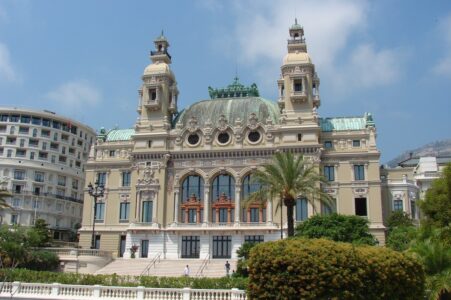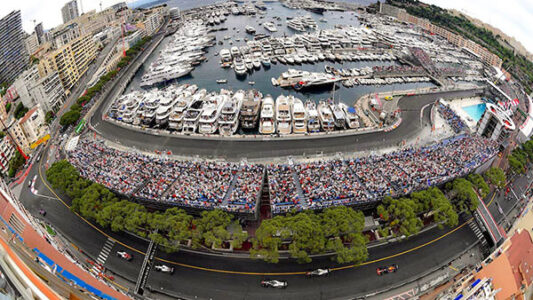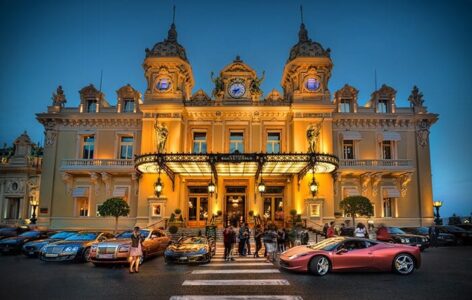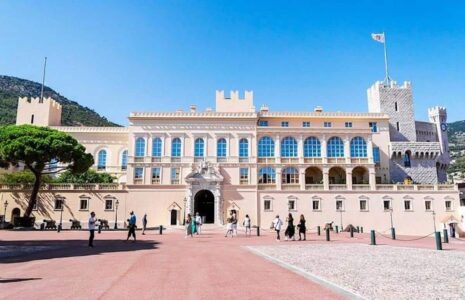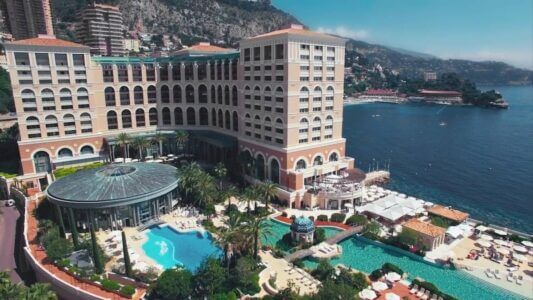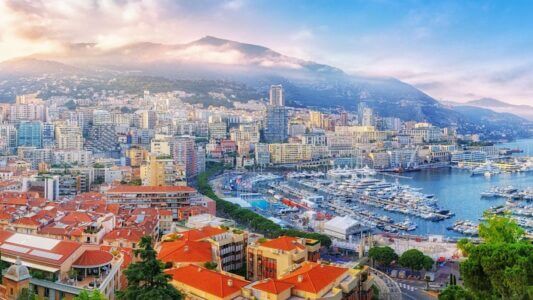Prince Albert II opens ‘Demain l’Océan ?’ exhibition

The exhibition features artists from all over the world who want to question our relationship with the seas and imagine new narratives for the future of the oceans.
While a week of art and culture is in full swing in the Principality, an exhibition organised by Monaco’s Department of Cultural Affairs opened on 4 July as a tribute to the ocean. From now until 7 September, visitors to the Quai Antoine I exhibition hall can go on a six-part artistic journey that explores the climate emergency and protection of the oceans.
On Tuesday 8 July, Prince Albert II also discovered the themed visit (with sections entitled L’Horizon, La Faune et la Flore (flora and fauna), Habiter le rivage (living on the shoreline), Prendre la mer (going out to sea), La mer en danger (sea under threat), Avant le déluge (before the deluge).
The project is part of “La Mer en Commun – Année de la Mer” (Our shared seas – year of the sea), an initiative of the French Ministry of Ecological Transition, as well as the Blue Economy and Finance Forum and the 3rd United Nations Ocean Conference (UNOC 3), held in Monaco and Nice in June 2025.
“Clearly, the sea is a grey area, a ‘terra incognita’, as far as mankind is concerned,” writes exhibition curator Élodie Antoine in the preface to the exhibition catalogue. She also quotes a favourite historian of hers, Jules Michelet, who features throughout the exhibition through several other quotes. “There are different ways of approaching the works. You can look without having to read, and also take the time to look at the labels or the catalogue,” Élodie explains as she describes the artistic diversity and the scenography designed by Thomas Guillaume.
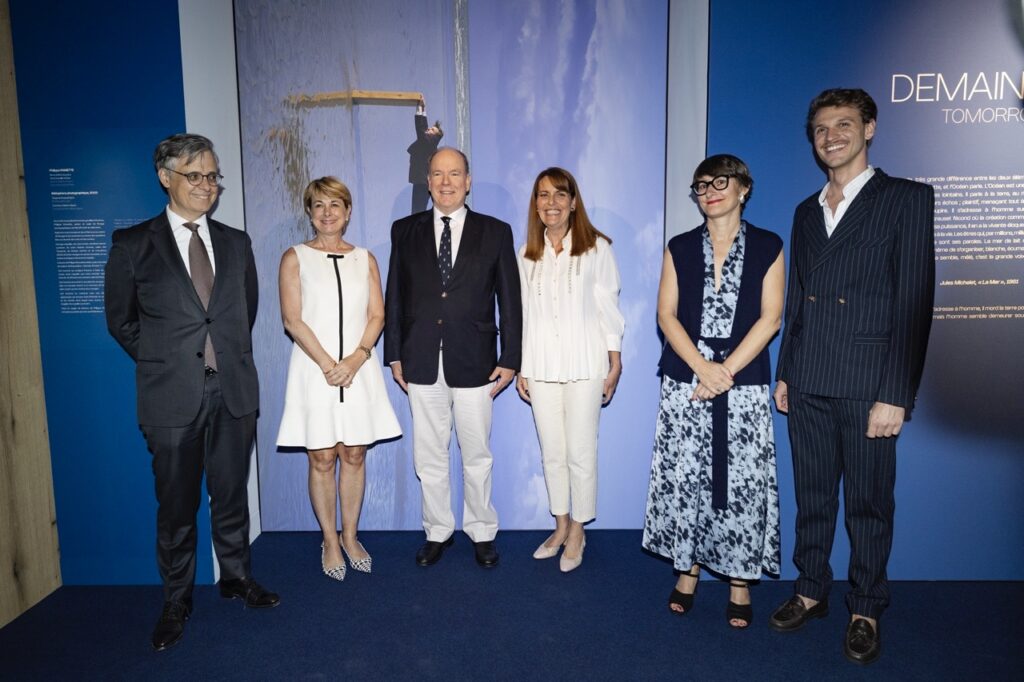
Visitors explore the worlds of 34 artists from five continents. 71 works invite them to question their relationship with the marine worlds. “Demain l’Océan? won’t solve anything. That’s not its goal. Its purpose lies elsewhere, on the fringes, where something can still be done as an individual and citizen,” writes Élodie Antoine.
The Monaco Tribune editorial team was particularly struck by five works:
1. Seascape by Jean-Christophe Norman (2024)
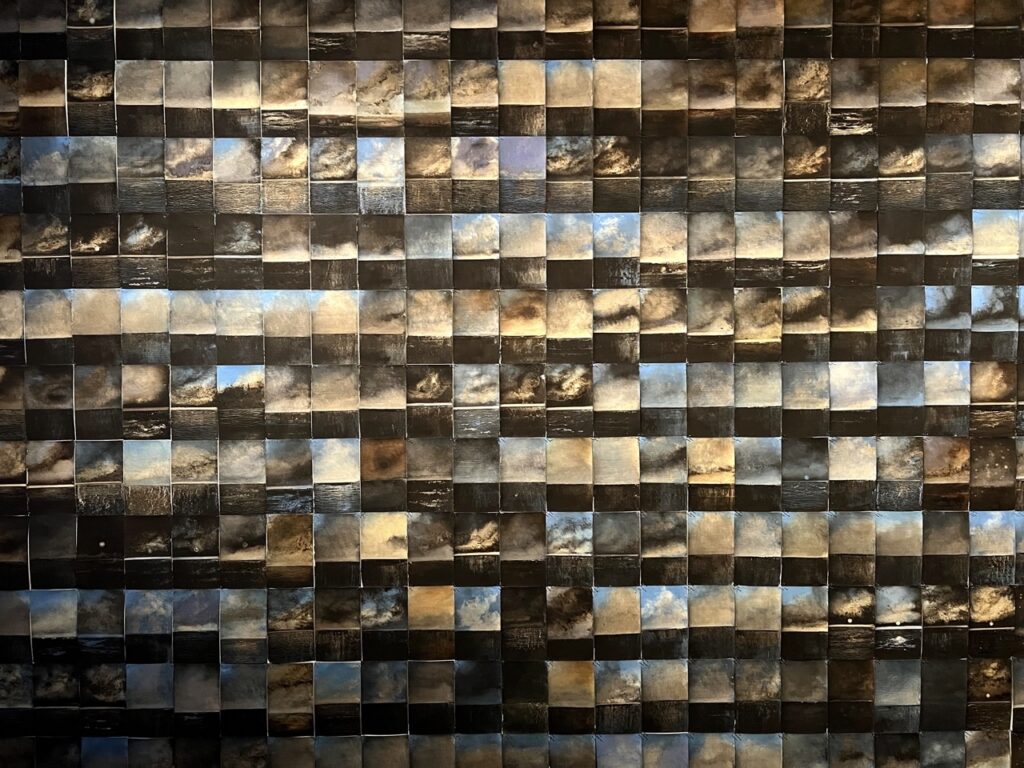
Using bits of newspaper picked up on his travels, Jean-Christophe Norman has painted the nuances of the horizon in the style of British landscape painter Constable, using oil and encaustic wax. Some of the printed characters are still visible where the sky meets the sea. For this installation, the arrangement of the small canvases is always left up to those who install the exhibition. “It is a living piece. The mosaic is never the same from one exhibition venue to another,” Élodie Antoine tells us.
2. Seated Bathers by Farah Atassi (2025)
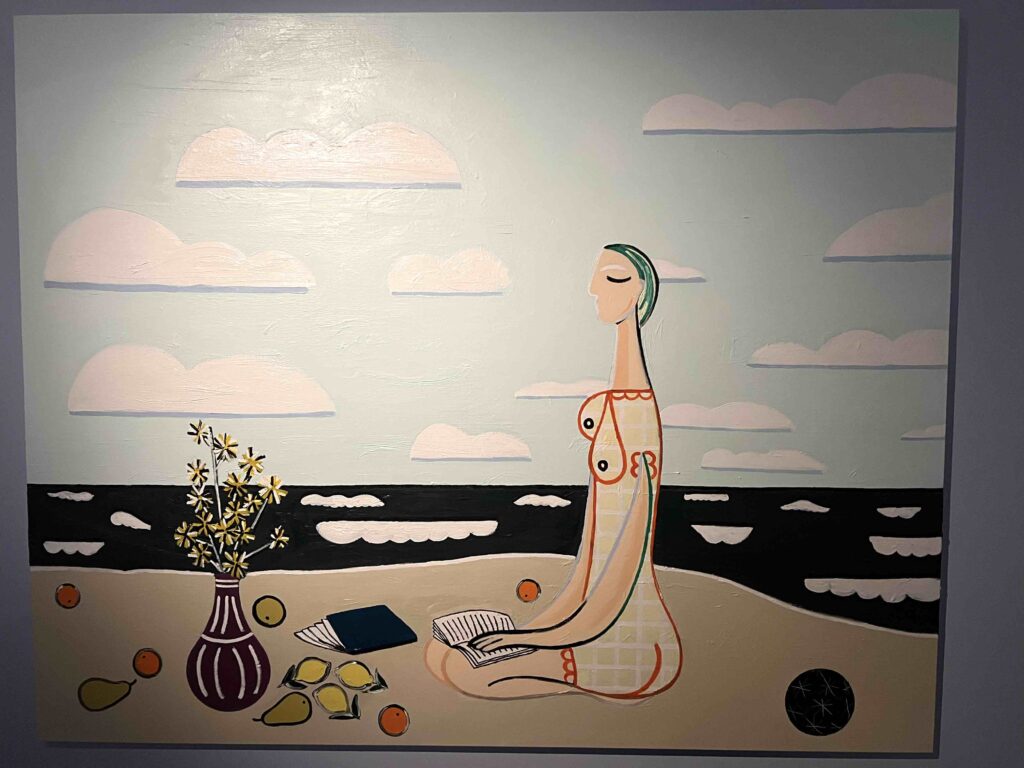
The third part of the exhibition looks at how we live on the beach. Renowned for her bathers, Farah Atassi created this painting especially for the occasion. Here the figure is serene, eyes closed despite the mess on the ground around them. Through the striped swimming costume, the posture, the bright colours, the drawn lines, the subject echoes Picasso’s 1928 Bathers series in Dinard.
3. The Crossing by Bao Vuong (2023)
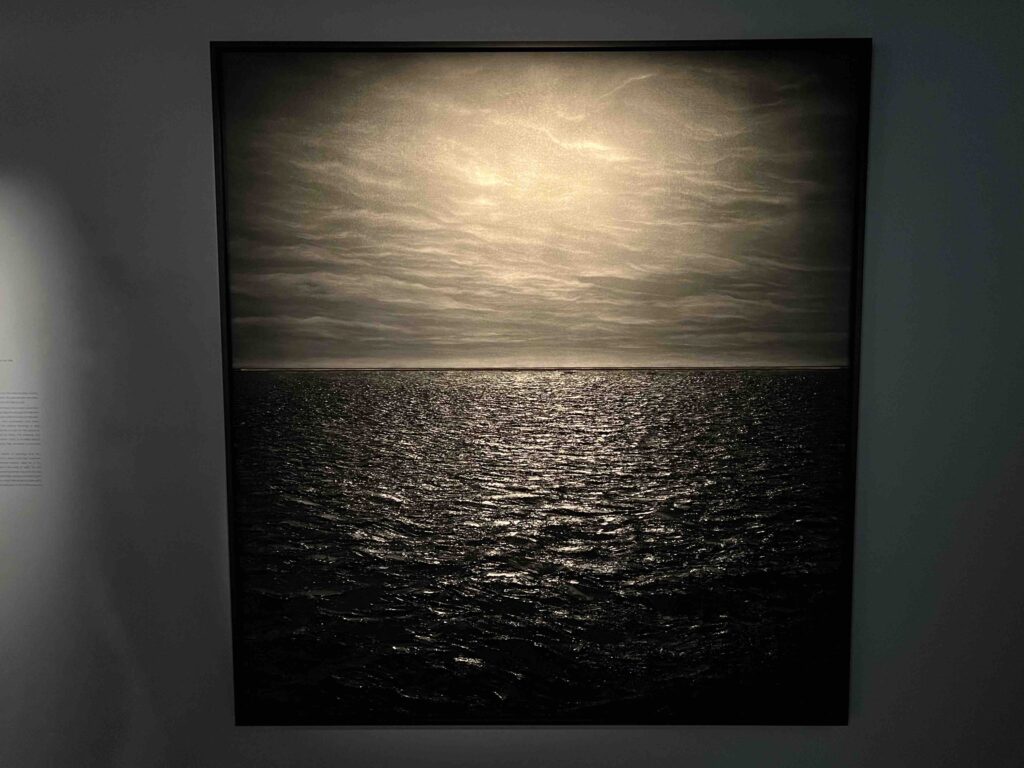
Bao Vuong was born in Vietnam in 1978, just after the war. In 1979, when he was only one year old, he fled the country by boat with his parents, heading for Europe. It took a year to cross the seas and oceans. Conditions on board the fragile, overloaded boats were difficult, night time was cold and unsettling, just like this mysterious canvas. It’s easy to imagine that this experience left a lasting impression on the subconscious of the painter, when he was just a baby.
4. Shipwrecks by Zineb Sedira (2008 and 2018)
Mauritania is home to the world’s biggest naval cemetery. The Shipwrecks triptych was created in the port of Nouadhibou, the setting off point for many migrants trying to make their way to Europe in the 2000s. Here, the sea becomes not only a desert of shipwrecks, but also a place where fish poisoned by the noxious waters are washed up, along with the bodies of humans who were unable to reach the shores of the Canary Islands.
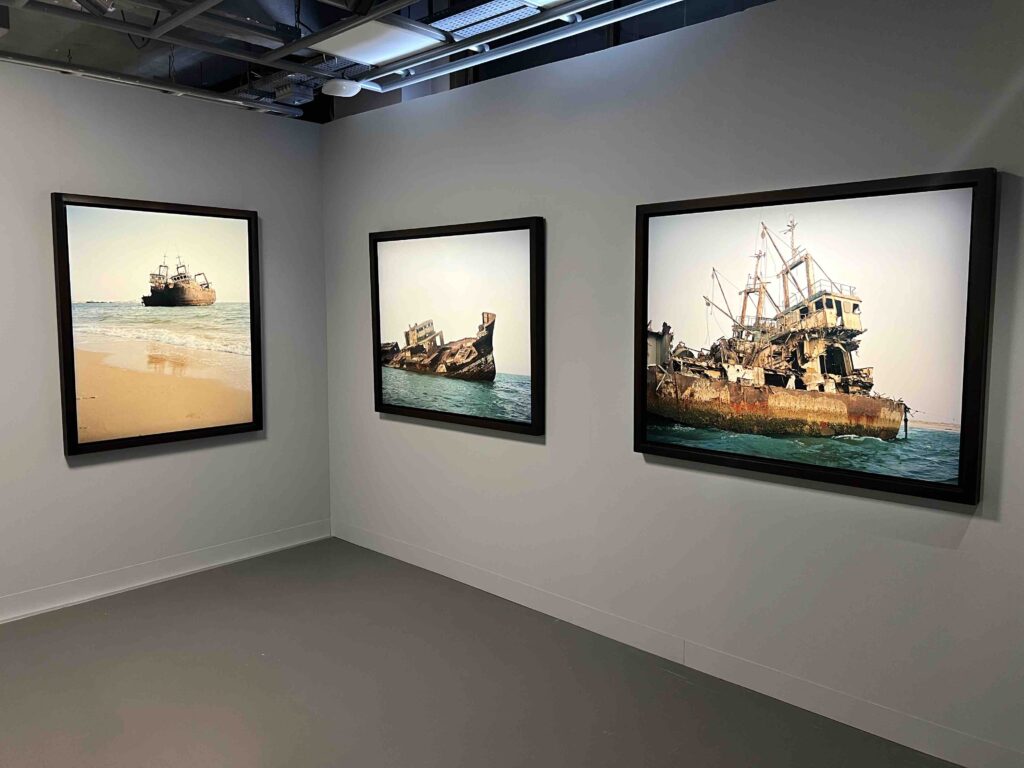
5. Fish Flag Mourant by Malachi Farrell (2001)

A mooring buoy, rusty bits of metal… This mobile installation uses rubbish found in Monaco to create a desolate scene. “We also added a few tarpaulins and plastics that were used to put the exhibition together, because we have to bear in mind that it generates a lot of waste,” explains Élodie Antoine. The soundtrack, which includes distressing metallic clicking, reinforces the artist’s message: let’s reduce our waste to protect marine ecosystems.

